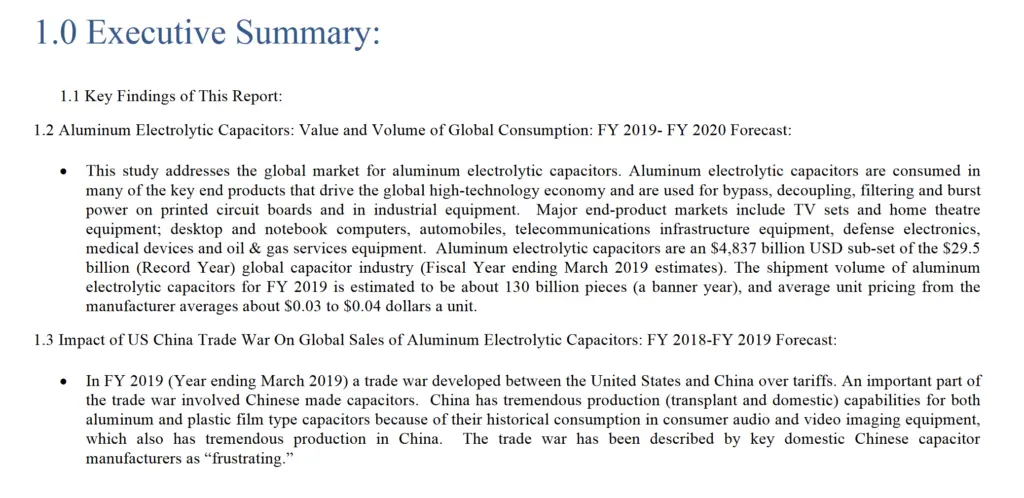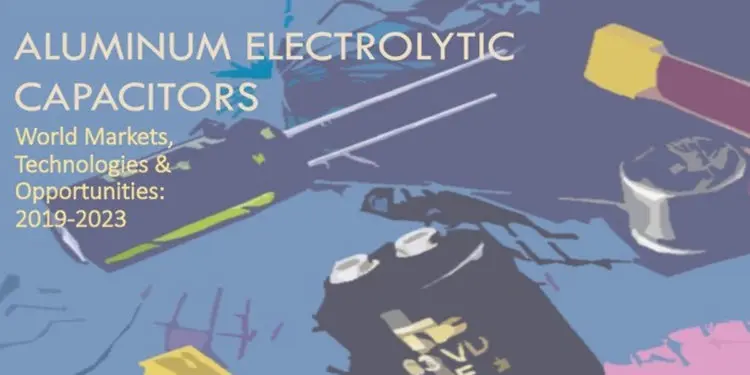Paumanok Publications, Inc. has released the new updated global market research report on ALUMINUM ELECTROLYTIC CAPACITORS.
The report includes:
- radial leaded aluminum electrolytic capacitors
- vertical chip (V-Chip) aluminum electrolytic capacitors
- axial leaded aluminum electrolytic capacitors
- solid polymer molded chip (H-Chip) aluminum electrolytic capacitors
- snap mount aluminum electrolytic capacitors
- screw terminal aluminum electrolytic capacitors
- specialty aluminum capacitors
The study addresses the global value and volume of demand for aluminum electrolytic capacitors as well as average unit price pricing from a historical perspective and with forecasts to 2023.
The study estimates global consumption value by end-use market segment, including circuit applications such as
- consumer audio and video imaging
- home theatre
- computer and business machine
- industrial electronics and power supplies
- automotive electronic
- sub-assemblies (UTH and Beyond the Firewall) communications infrastructure
- equipment specialty
- defense
end-use markets; and addresses the shifts occurring in these end markets in FY 2018 and FY 2019.
The study offers a detailed analysis of the impact of short supply capacitors on the global aluminum electrolytic capacitor market in FY 2019, and includes additional analysis of specific technology developments impacting the value of the industry, such as new developments in
- multi-level electrolytic etching
- ultra-high voltage electrolytic foil development
- improvements in foil formation technology
- the roll out of snap-in 125 C aluminum capacitors for automotive and 135 C solid polymer chips for automotive
- renewable energy system capacitors (550 V-5,000 Hours, 15/30 Years)
- new internal structure and aging technique for aluminum capacitors
- new V-Chip for low temperature reflow process
- reduction in the liquid V-Chip volume size
- semi-solid aluminum electrolytic capacitor developments
- needle-shaped aluminum electrolytic capacitor developments
- and more…
The study also quantifies the number of developments underway in aluminum capacitor technology today that are targeting transportation, industrial power and 5G infrastructure. The study also addresses global consumption value by world region and key country of consumption with emphasis upon:
- China
- Germany
- USA
- Singapore
- Mexico
- Korea
- Thailand,
And addresses changes in each of these localized markets in FY 2019.
The study addresses key changes in market shares in the global aluminum electrolytic capacitor industry for the top worldwide producers, forecasts global consumption of aluminum electrolytic capacitors to 2023 based upon value, volume and pricing and has detailed market share data as well as producer profiles on all major and minor manufacturers of aluminum electrolytic capacitors.
The study contains 219 pages and 41 figures, including detailed historical growth rates and FY 2019 forecasts for revenues at the top aluminum capacitor producers and overall market forecasts to 2023.
Published February 2019, 219 Pages
ISBN # 1-893211-11-8 (2019)
INCLUDES A 24 SLIDE PAUMANOK SPECIAL PRESENTATION ON ALUMINUM CAPACITOR MARKETS, TECHNOLOGIES AND OPPORTUNITIES- EASY TO READ AND EASY TO UNDERSTAND, BUT ALSO BACKED UP BY THE WRITTEN DETAILED ANALYSIS. A POWERFUL COMBINATION.
































